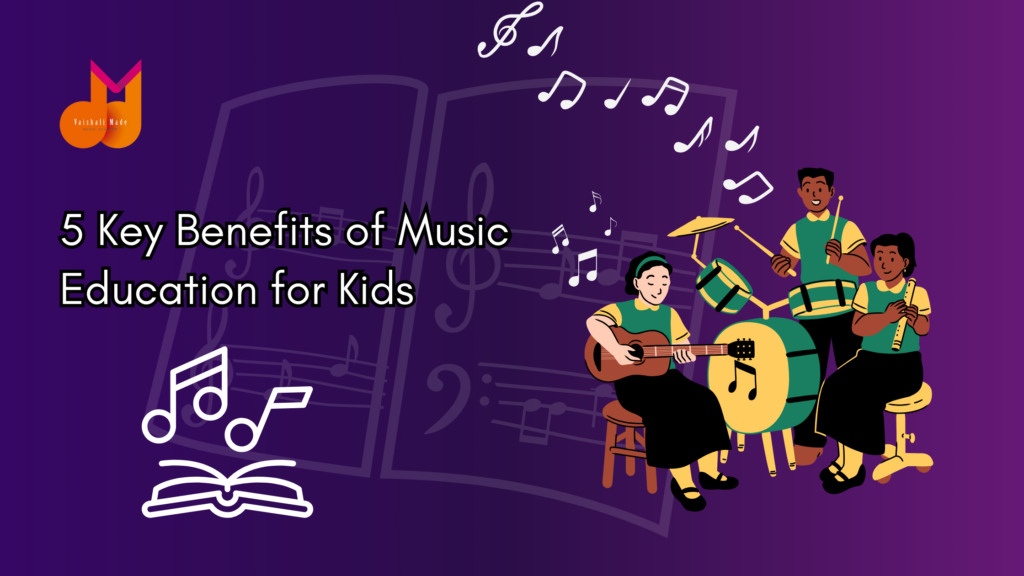
Staying creative and pushing the envelope is what music is about in order to grow. One way of doing this is through new music techniques that add depth and innovation to your compositions and performances. This can be beneficial for a beginner or even a seasoned musician, breaking the creative rut and giving the sound an edge.
In this blog, we shall discuss seven unique music techniques that would open new creative doors for you. These sound techniques can help to discover fresh ways of expressions, develop new skills in you, and transform the music. If you step beyond your comfort zone and let these approaches into your works, then you can ensure interesting and dynamic compositions would be produced. Let’s explore!
Try some Unconventional Scales Music Method
What Are Unconventional Scales?
We are used to the major and minor scales, seven notes per scale and following a predictable pattern of whole and half steps in traditional Western music. Unconventional scales, on the other hand, deviate from this norm and give your music a different flavor. These scales include modes like Dorian and Phrygian, microtones which refer to tones that lie between the notes of the Western scale, and other non-traditional scales, such as the chromatic scale or pentatonic scales.
For example, the Hirajoshi scale is a Japanese pentatonic scale, or the whole tone scale, which only uses whole steps, to give your music an entirely different mood or texture.
How Unconventional Scales Can Transform Your Sound
Using unconventional scales can breathe new life into your music. The Dorian mode, for instance, can make the piece sound minor but more upbeat and light, whereas chromatic scales can create the sense of tension and then resolution.
Practical Tips for Experimenting with Unconventional Scales
Learn New Scales: Take time to learn new scales that are not your typical genre. Practice playing them on your instrument and learn the theory behind them.
Apply Modes to Your Compositions: Instead of being confined to major or minor, try composing a melody in the Mixolydian mode, which sounds bluesy, or in the Phrygian mode, giving it a Spanish or Middle Eastern feel.
Use the Notes Judiciously: Do not be tempted to use all of the notes in an altered scale. Often, simply highlighting a few notes can make all the difference in the world for a piece.
Try Out Harmonic Chords: Play around with the chords that come with these scales. Altered scales might produce harmonies that are odd and produce new textures.
Try Alternate Tunings
What is Alternate Tuning?
It changes the string pitches on instruments such as a guitar, bass, or piano. In standard tuning, the strings are used at a fixed pitch-in other words, E-A-D-G-B-E for the guitar-but alternate tunings involve changing the strings around to different pitches, generating new harmonic possibilities. More recent examples of alternate tunings include drop D tuning: D-A-D-G-B-E; and open G tuning: D-G-D-G-B-
Alternate tunings are commonly used by guitarists, especially in rock, metal, and folk, but they can be applied to almost any stringed instrument to create new sounds.
Why Alternate Tunings Matter
Alternative tunings can lead to new approaches for playing the instrument and, in turn, unlock unusual chord voicings, richer harmonies, and fresh melodic ideas. You are making new harmonic relationships between notes by simply changing the tuning of the strings, which then leads you to a different approach for songwriting and improvisation.
Practical Tips for Exploring Alternate Tunings
Start with Songs You Know: Begin by trying alternate tunings on songs you already know. That way, you can immediately hear how the tuning changes the sound of the music.
Explore Chord Shapes: Learn new chord shapes in alternate tunings. In some tunings, you’ll find that a simple finger position can yield a complex and interesting chord.
Create Your Own Tunings: If you’d like to take your creativity to an even higher level, try creating your own unique tuning by raising a few strings to reveal new chord possibilities.
Use Unusual Time Signatures
What Are Unusual Time Signatures?
We hear most Western music in 4/4 time, meaning that there are four beats to a measure. However, there are many other time signatures that can give your music a completely different feel. Unusual time signatures, such as 5/4, 7/8, or 9/8, are often used in progressive rock, jazz, and fusion.
These strange time signatures can give your music a quirky, unpredictable rhythm that challenges the performer and the listener alike. Artists like Dave Brubeck, who popularized his piece Take Five in 5/4, and Tool, with its intricate rhythms in 7/8 and 5/4, have shown that unusual time signatures can make their compositions exciting and dynamic.
How Shifting Time Signatures Enhance Your Music
Using unusual time signatures, you can differentiate your music from the usual ordinary tracks. This way, time signatures will provide the complexity and unpredictability for listeners, keeping them interested in the music and making it sound new.
Practical Tips for Experimenting with Time Signatures
Start Slow: Begin practicing in an odd time signature at a slow tempo. Clap or tap along with the beats to internalize the rhythm before applying it to your instrument.
Use Syncopation: Combine an unusual time signature with syncopated rhythms to create even more tension and complexity in your music.
Write with the New Time Signature: Try composing a piece in an odd time signature, focusing on building a rhythm that feels natural within the time frame.
Play with Rhythmic Patterns
What Are Rhythmic Patterns?
Rhythmic patterns refer to the arrangement of beats and accents in a piece of music. While most popular music sticks to basic, predictable rhythms, there are countless ways to alter your rhythms to create unique and engaging grooves. These include syncopation (accenting offbeats), polyrhythms (two or more contrasting rhythms happening simultaneously), and cross-rhythms (when different time signatures overlap).
Rhythmic complexity is one of the main elements that can make music stand out, particularly in genres like jazz, funk, and progressive rock.
How Rhythmic Changes Can Impact Your Music
Changing your rhythmic patterns can drastically alter the mood, energy, and groove of a piece. Syncopated rhythms create a sense of tension and surprise, while polyrhythms can add complexity and depth.
Practical Tips for Incorporating Rhythmic Patterns
Learn Basic Polyrhythms: Begin with simple polyrhythms, such as playing 3 over 4 (three beats played in the same space as four).
Try Syncopation: Experiment with placing accents on off-beats to create a more dynamic rhythm.
Use Drum Machines: If you play electronic music, using a drum machine or digital audio workstation (DAW) can help you experiment with complex rhythms.
Experiment with Extended Music Techniques
What Are Extended Techniques?
Extended techniques are non-conventional ways of playing an instrument beyond the traditional way. It ranges from techniques such as fingerpicking, slap bass, harmonics, glissandos, and even preparing the piano-putting objects on the strings to change the sound. Most of these melody techniques are used in avant-garde and experimental music techniques to produce distinctive textures and sounds.
How Extended Techniques Expand Your Sound
Extended sound techniques can add another dimension to your music method. For instance, the slap bass produces percussive, funky tones; harmonics add shimmering, ethereal texture to your melodies. These may be the techniques that provide more expression and depth to your compositions.
Practical Tips for Experimenting with Extended Techniques
Practice individual techniques: Choose one extended technique at a time to practice. Start slow and build up speed and accuracy.
Combine extended musical techniques with traditional playing: Mix extended techniques in music with more traditional approaches to create contrast and texture in your music. Record yourself: Use a microphone or recording device to capture the sounds of extended techniques and listen to how they change the overall tone of your piece.
Electronic Effects of Manipulation of Sound
Electronic Effects
It’s like reverb, delay, distortion, and modulation can drastically change the sound of your music. Such effects are commonly utilized in electronic, rock, and experimental music for creating innovative soundscapes. Adding space with reverb creates an echo-like effect by delay, while distortion gives your sound a rough texture. Modulation can bring movement or depth to your sound.
How Electronic Manipulation Enhances Your Music
Electronic effects can totally change the mood of a track, from subtle ambience to full-on chaotic soundscapes. These effects will help shape your musical ideas and make them pop.
Practical Tips on How to Use Electronic Effects
Experiment with Effects Chains: Combine several effects together (like reverb + delay) to see how they play together.
Use Small Changes: Sometimes small tweaks in reverb or delay can make all the difference in your music.
Try Sound Design: Experiment with changing the sound of your instrument with effects to create entirely new timbres.
Combine Genres and Styles in Sound Strategies
Why Genre Blending Is the Secret
One of the most effective ways to innovate in music is through genre blending. Consider the juxtaposition of jazz and hip-hop, rock and electronic, or classical and modern pop. These combinations break down the barriers between genres and inject new ideas.
Some examples of successful genre fusions include the works of artists such as Beck, Radiohead, and Herbie Hancock. Experimenting on different styles can lead one to create a sound specifically their own.
Practical Advice on Blending Genres
Mix elements of different genres: take rhythmic elements from one genre and apply harmonic elements from another. Take melodic patterns from one genre and apply them to an entirely different musical style. Collaborate with other musicians; working with musicians from different genres can inspire new ideas and approaches.
Conclusion
Elevate Your Sound with Vaishali Made Academy
Exploring new music techniques is an essential part of growing as a musician. Whether you’re trying unconventional scales, experimenting with alternate tunings, or blending genres, pushing the boundaries of your creativity will lead to exciting new possibilities in your music. If you’re ready to dive deeper into these techniques and master your craft, consider joining Vaishali Made Academy.
At Vaishali Made Academy, we teach the best for musical technique that will give you the journey to make it bigger and better in musical techniques. From foundational theory in music to advanced techniques of innovating ways to show what’s in your soul, we offer comprehensive courses here. Join us today, and start mastering the techniques that will take your sound to new heights!


